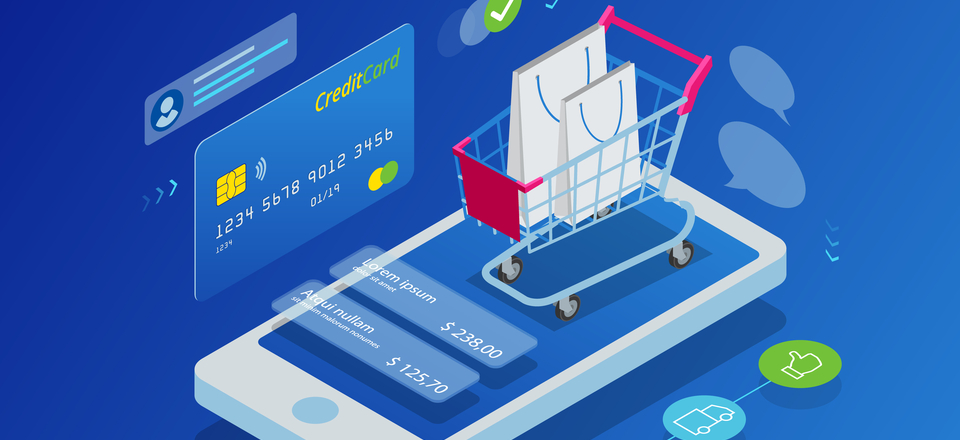There’s really no question that the whole world has shifted towards eCommerce as a direct result of the COVID-19 pandemic. People have been forced to stay at home, which means shopping online has been the only means of getting certain products and services.
Even as many restrictions have begun to loosen, the trend of eCommerce has already become ingrained for many shoppers. Customers can’t beat the convenience of shopping at home. In response to this, heightened preference for buying online, eCommerce competitors are springing up everywhere. That means to succeed, you’re going to have to reassess your whole marketing strategy in 2021.
Here are 10 strategy tips ecommerce businesses should employ if they want to succeed this year.
1. Retargeting

Where once, it was enough to carpet bomb social media with broadly targeted advertisements, today’s market has grown savvier. Now, with the help of current browsers, web analytics software, cookies and other tools, you can see when a potential customer visits your product page, clicks on an ad, and much more. This kind of technology lets you target users based on their behavior. And that’s a good thing, because online behavior is a sign of greater interest in your product or service. So, narrowing your focus will improve your conversion rate.
2. Content Marketing

All marketing really comes down to building relationships with customers. And one important way you can do that is to provide original content on your owned channels (your website, social media accounts, etc.), that is free and represents real value to your audience. Quality content is one way to communicate to your customer that you’re an expert in your field, and so you can meet their needs in unique ways.
Good content should be a mix of formats, including written, audio, images and video. And recent trends suggest you should weight it towards video, and make everything as interactive as possible.
3. Social Media Advertising

Social media marketing is not a new concept, and there’s little doubt you’re already using social media channels to get your messages out. But your regular posts are only going to get so far. Paid advertising on social media is very effective. It allows you to target your ads very specifically, and they’re very customizable. What’s more, social media platforms provide useful metrics to help you keep track of your return on investment. That means you’ll know if your advertising is effective or not – and can make adjustments accordingly. So be sure to put some of your paid advertising dollars into social media, where the people are.
4. Website Optimization

E-commerce is all about your website, and what your customer can do through it. But there are a lot of terrible eCommerce websites out there. To be effective, your website needs to do more than offer goods for sale. You have to take user experience into account. Answer questions like, “How easy is it for my customers to find what they’re looking for?” and “Is it well organized and convenient?” The best way to answer these questions is to do a site audit, and there are several good 3rd party services that can do this affordably.
When it comes to website optimization, you should focus on the following goals:
- Maximize your site’s loading speed
- Use better, more realistic product images
- Add relevant, original content
- Focus on SEO
Remember, it’s all about getting rid of anything that can discourage shoppers from buying.
5. Personalization

With today’s technology, there’s absolutely no excuse for not providing a premium customer service experience for each customer. And that’s done by using consumer micro data, that’s information about their web behavior and about what kinds of products they prefer, to customize their visit and shopping experience. One effective way to collect user data is by incentivizing consumers to sign up for individual customer logins.
Once you’ve collected specific information, opportunities will open up for you to provide personalized ads, specific product recommendations and other informative content that is tailored to fit. You’ll be able to provide real value to the customer in new ways.
Remember that customization can make the customer feel important. But, on the other hand, following a customer TOO closely can look creepy, and could make your guests feel awkward. So, find a balance between customization and consumer privacy.
6. Consumer Connected Communication

These days, doing business online is more conversational than ever. Consumers need to feel appreciated and respected, and they need real, human connection. Especially in a time of social isolation. Consumer connected communication can play out in a number of ways. But ideally, it would look something like a visit to an old-fashioned brick-and-mortar store. A salesperson politely approaches a customer and a conversation ensues. The employee determines the customer’s need, and then helps the customer to find the best solution and overcome objections. Digitally, all of these things can happen in a similar way. Channels for this kind of communication can be through social media, social messaging, SMS messaging, online forums and events, and experiential marketing campaigns. The point is that the consumer and the seller have to communicate freely and interactively.
7. Customer Retention & Re-engagement

Customer retention and re-engagement are basic building blocks of modern business. Selling one product to one customer is a good thing, but it won’t keep the doors open over the long term. But if you can get the same customers to come back and buy again and again, you have sustainability. And those are the kinds of customers who spread positive word-of-mouth to their friends and acquaintances.
But how do you get there? First, of course, is to offer premium customer service and satisfy your customers. But second, and nearly as important, is to make sure your customer doesn’t forget you after the sale. If you’re polite and classy enough in your initial engagement, it shouldn’t be too hard to get your customers to opt in to future marketing emails or text messages. But don’t overdo it, because an annoyed customer is a former customer.
8. Voice Driven User Experience

One of the biggest and fastest growing trends in consumer technology is voice-driven AI. With smartphones and smart speakers exploding in use, more and more users are choosing to search by voice command, rather than typing queries into a search bar by hand. And you might be surprised that this trend carries with it a significant number of technical challenges. That’s because spoken word is different than written word. It’s easier to speak a full sentence than write one, and so websites must increasingly tailor their SEO and internal search functions to respond correctly to new stimuli.
9. Brand Collaboration

As new competitors enter the market, it’s a reasonable expectation that your marketing efforts (and budget) will have to increase in order to stay ahead of the pack. But more funds may not be available for more marketing. A great strategy to address this is to find a brand or business that offers complementary products which you do not sell, and work together. That way, each of your marketing efforts will reach a broader market and a larger number of customers. Why go it alone, when teamwork makes the dream work?
10. Influencer Marketing

Traditional advertising is still very useful, but it’s not necessarily the most effective use for your marketing dollars. These days, your customers are savvier than ever. And with an ocean of competing brands, they need a reason to trust you over the others. Influencers are online personalities who work hard at developing close, trust-based relationships with their followers. So, if you can get a popular YouTuber to talk about your product or store for a few minutes, you’ll be reaching an audience that has already established the trust-factor. All you’ll have to do is close the deal.

Best Regards,
Chau Lim
Email: chau@virtualdonewell.com
Phone: +61 413 981 888


Recent Comments